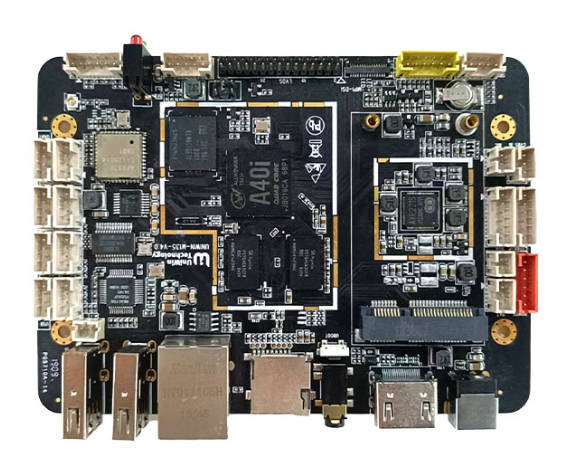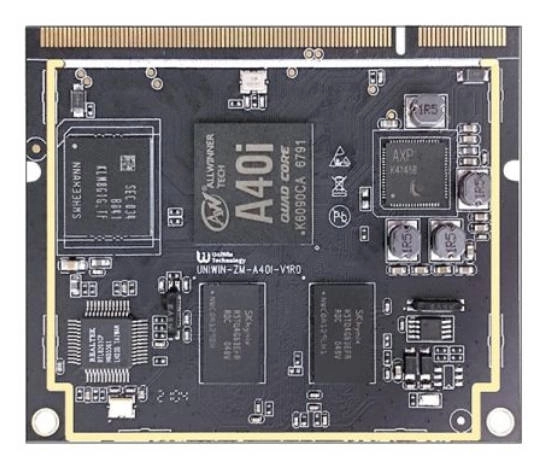
If you’re an SEO content creator or a tech enthusiast diving into Arm-based systems, you probably know the motherboard is the heart of any computer setup. Its design greatly shapes how well Arm software runs. This is true whether you’re building IoT gadgets, smart displays, or high-performance embedded devices. At Uniwin-Global, we craft motherboards tailored for Arm processors. Our goal is to ensure smooth integration and excellent performance. This blog explores how motherboard design affects Arm software efficiency. It covers key parts, design choices, and tuning tips to help you boost your system’s capabilities. Let’s dive into the details to help you get the most out of your Arm-based projects.
The Relationship Between Motherboard Design and Arm Architecture
The connection between motherboard design and Arm architecture is vital for top-notch software performance. Arm processors are known for being power-saving and flexible. Yet, they need a solid motherboard to shine. A carefully built motherboard lets the Arm CPU work at its best. It reduces slowdowns and makes the system quick and responsive.
Key Components of a Motherboard That Affect Arm Systems
Motherboards aren’t just platforms for holding parts. They’re complex systems that control how Arm processors connect with other hardware. Important parts include:
- CPU Socket: Matches Arm processors like those from Rockchip or Allwinner. We use these in our A40iand A133
- Chipset: Acts as the main hub for communication between the CPU, memory, and other devices.
- Power Delivery System: Supplies steady power to the Arm processor. This is key for consistent performance.
- Cooling Solutions: Handles heat to avoid performance drops.
These parts must suit Arm’s Reduced Instruction Set Computing (RISC) design. This ensures fast instruction processing and low energy use.
How Bus Speeds and Data Path Widths Impact Performance
Bus speeds and data path widths decide how fast data moves. Arm systems often work in small devices. They need quick buses for tasks like AI or real-time data analysis. A wider data path, like 64-bit instead of 32-bit, lets more data flow per cycle. This cuts down delays.
The Role of Chipsets in Managing Arm-Based Workloads
The chipset is the motherboard’s control center. It manages data flow between the Arm CPU, memory, and devices. A good chipset spreads workloads well. This reduces delays in tasks like video processing or IoT data handling. For example, chipsets in our Uniwin-Global motherboards support Android and Linux. This allows smooth multitasking for Arm-based apps.
Memory Architecture and Its Effect on Arm Software Execution
Memory design heavily influences how Arm software runs. It affects how fast data is accessed and processed. Arm systems often work in tight spaces. So, memory tuning is crucial for good performance.
RAM Compatibility and Bandwidth Considerations
RAM compatibility means the motherboard supports the right memory types and speeds for Arm processors. For instance, DDR4 or LPDDR4 RAM offers more bandwidth than DDR3. This means quicker data access for apps like machine learning or video playback. Our motherboards, like the A40i, are built to handle high-bandwidth RAM. This ensures they meet modern Arm software needs.
Cache Hierarchy and Its Influence on Processing Efficiency
Cache memory sits close to the CPU. It stores data used often to speed things up. Arm processors have multi-level caches (L1, L2, L3). The motherboard must support these well. If the cache setup is poor, data delays can slow software. Our boards are designed to boost cache efficiency. This improves speed for real-time tasks.
Memory Latency in Relation to Instruction Throughput
Memory latency is the time it takes to grab data from RAM. It affects how fast instructions are processed. Arm’s RISC design runs simple instructions quickly. But high latency can undo this advantage. Our motherboards have low-latency memory controllers. They keep Arm software running smoothly, even with heavy tasks.

Power Delivery and Thermal Management in Arm-Based Systems
Arm processors save power. But their performance relies on the motherboard’s power and cooling systems. These ensure stability and prevent slowdowns.
Voltage Regulation Modules (VRMs) and Power Stability
VRMs control the power sent to the Arm CPU. They keep voltage steady during high-demand tasks. High-quality VRMs, like those in our motherboards, prevent power drops. This avoids crashes or performance dips. It’s vital for Arm systems running heavy apps like AI or video rendering.
Thermal Design Considerations for Sustained Performance
Good cooling stops Arm processors from getting too hot. Overheating can cause throttling, which slows performance. Motherboards with strong cooling, like heat sinks or fanless designs, work well for Arm systems. Our products, such as the A133, handle wide temperature ranges. This supports industrial and IoT uses without losing performance.
Energy Efficiency of Arm Architectures on Modern Boards
Arm’s low-power design shines with motherboards that save energy. Features like dynamic voltage scaling and low-power modes help. Our motherboards support these, ensuring Arm systems use little power while staying fast. This matters for battery-powered devices or energy-saving projects.
I/O Interfaces and Peripheral Support for Optimized Arm Performance
Input/Output (I/O) interfaces and peripheral support connect Arm systems to external devices. They affect software performance.
The Importance of High-Speed Interfaces (PCIe, USB, etc.)
Fast interfaces like PCIe 4.0 and USB 3.2 allow quick data transfers. For example, PCIe slots on our motherboards support AI or GPU accelerators. This boosts software performance for data-heavy tasks.
Storage Options: NVMe vs. SATA on Arm Platforms
Storage speed impacts how fast Arm software accesses data. NVMe SSDs read and write faster than SATA. They’re ideal for Arm platforms with large datasets. Our motherboards support NVMe storage. This ensures low delays for apps like real-time analytics or smart displays.
Network Connectivity and Data Transfer Bottlenecks
Network connections, like Gigabit Ethernet or Wi-Fi 6, are key for Arm systems in IoT or cloud apps. Our motherboards have optimized network controllers. They remove data transfer delays, ensuring smooth software performance.
BIOS/UEFI Firmware Optimization for Arm Systems
The BIOS or UEFI firmware starts the hardware and ensures Arm OS compatibility. Tuned firmware boosts system speed and security.
Firmware-Level Tuning for Boot Times and System Responsiveness
Well-tuned BIOS/UEFI settings cut boot times. They also make the system more responsive. Our motherboards have firmware optimized for Arm environments. This ensures quick startups and efficient resource use for apps like Android or Linux.
Secure Boot and Compatibility with Arm Operating Environments
Secure Boot protects Arm systems from harmful software. It’s crucial for IoT and embedded devices. Our motherboards support Secure Boot and work with Arm-based OS like Android and Linux. This ensures both security and performance.
Scalability and Expansion Capabilities in Motherboard Architecture
Scalability and expansion options let Arm systems adapt to new software needs. Motherboard design is key for future-ready systems.
Multi-Core Support and Parallel Processing Potential
Arm processors often have multiple cores for parallel tasks. Motherboards must handle these cores well. Our M135-2 is built for multi-core Arm CPUs. It delivers strong performance for multitasking apps.
Expansion Slots for Specialized Accelerators (AI, GPU, etc.)
Expansion slots like PCIe allow adding AI accelerators or GPUs. These boost Arm software for specialized tasks. Our motherboards offer flexible expansion options to support these accelerators.
Future-Proofing Through Modular Design
Modular motherboard designs make upgrades easy. They ensure compatibility with future Arm processors and software. At Uniwin-Global, we focus on modular designs. This helps customers stay ahead of tech advancements.
Uniwin-Global: A Trusted Supplier of High-Quality Motherboards
At Uniwin-Global, we’re proud to offer top-notch motherboards built for Arm platforms. Our products ensure great performance for your projects. We’ve been in the game since 2016, and we know what it takes to deliver reliable solutions.
Overview of Uniwin-Global’s Product Offerings for Arm Platforms
We provide a variety of motherboards, including the A40i, A133, and M135-2. These are perfect for smart displays, IoT devices, and industrial systems. Built with Rockchip and Allwinner chips, our boards support Android and Linux. This gives you flexibility for different projects.
Commitment to Quality, Innovation, and Technical Support
Since starting in 2016, we’ve focused on quality and innovation. Our motherboards go through tough testing to ensure reliability. Our support team answers questions within 2 hours and fixes issues within 48 hours. Need help? Contact us for fast, professional support.
Conclusion
Motherboard design plays a huge role in getting the best out of Arm software. From chipsets to memory, power to I/O interfaces, every part matters. At Uniwin-Global, we build motherboards to maximize Arm processor power. Our solutions are strong, scalable, and energy-efficient. Choosing the right motherboard sets up your Arm-based systems for today’s needs and tomorrow’s innovations.
Frequently Asked Questions (FAQs)
What makes a motherboard compatible with Arm-based processors?
A motherboard works with Arm processors if it has a socket for Arm CPUs, like Rockchip or Allwinner. It also needs Arm-specific chipsets and firmware that supports Arm OS, such as Android or Linux. Our motherboards are designed to meet these needs. They ensure smooth integration and performance.
Can I use a general-purpose x86 motherboard for running Arm software?
No, x86 motherboards don’t work with Arm processors. The instruction set architectures (ISA) are different. Arm software needs a motherboard built for Arm CPUs. Our Uniwin-Global motherboards are designed for this, ensuring proper function and performance.
How does motherboard quality impact long-term software stability?
High-quality motherboards provide steady power and good cooling. They also have reliable firmware. These prevent crashes and keep performance consistent. Our motherboards are built for this. Poor-quality motherboards may cause power issues or overheating. This leads to software instability over time.





